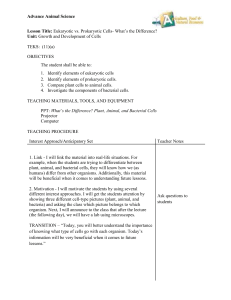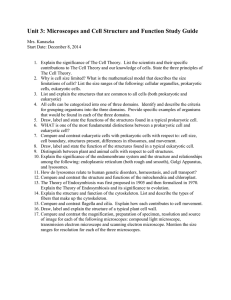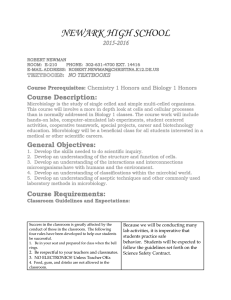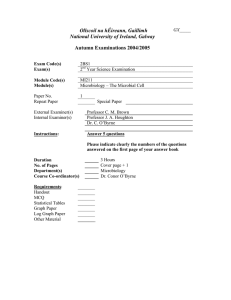Reading Guide Chapter 3: Microscopy and Cell Structure
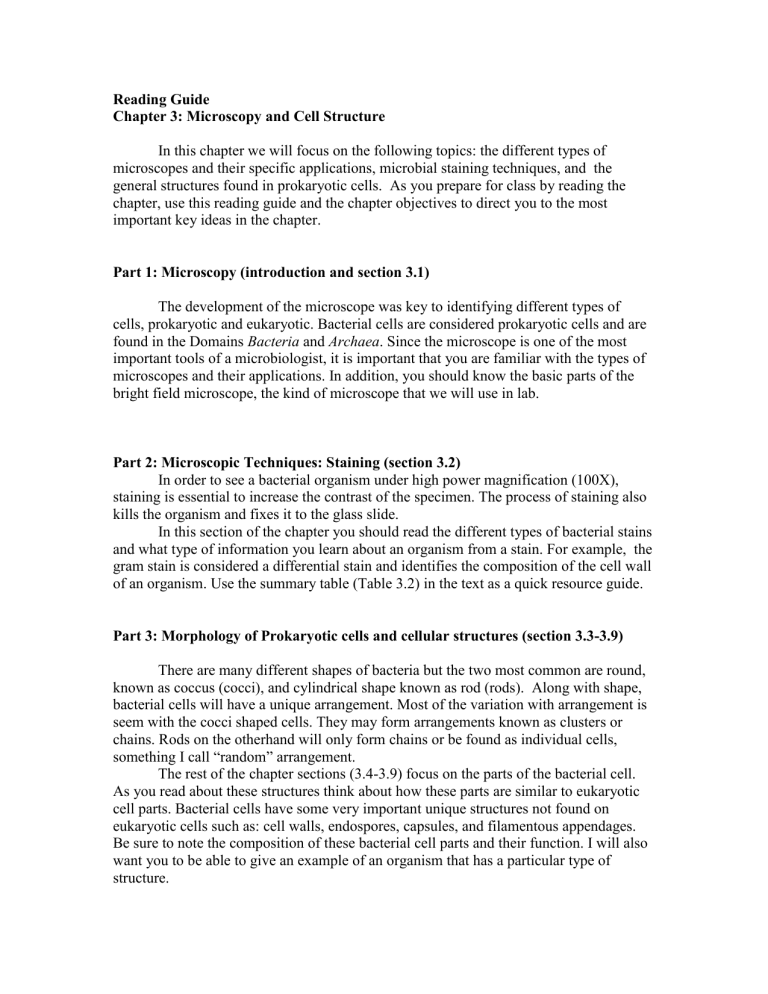
Reading Guide
Chapter 3: Microscopy and Cell Structure
In this chapter we will focus on the following topics: the different types of microscopes and their specific applications, microbial staining techniques, and the general structures found in prokaryotic cells. As you prepare for class by reading the chapter, use this reading guide and the chapter objectives to direct you to the most important key ideas in the chapter.
Part 1: Microscopy (introduction and section 3.1)
The development of the microscope was key to identifying different types of cells, prokaryotic and eukaryotic. Bacterial cells are considered prokaryotic cells and are found in the Domains Bacteria and Archaea . Since the microscope is one of the most important tools of a microbiologist, it is important that you are familiar with the types of microscopes and their applications. In addition, you should know the basic parts of the bright field microscope, the kind of microscope that we will use in lab.
Part 2: Microscopic Techniques: Staining (section 3.2)
In order to see a bacterial organism under high power magnification (100X), staining is essential to increase the contrast of the specimen. The process of staining also kills the organism and fixes it to the glass slide.
In this section of the chapter you should read the different types of bacterial stains and what type of information you learn about an organism from a stain. For example, the gram stain is considered a differential stain and identifies the composition of the cell wall of an organism. Use the summary table (Table 3.2) in the text as a quick resource guide.
Part 3: Morphology of Prokaryotic cells and cellular structures (section 3.3-3.9)
There are many different shapes of bacteria but the two most common are round, known as coccus (cocci), and cylindrical shape known as rod (rods). Along with shape, bacterial cells will have a unique arrangement. Most of the variation with arrangement is seem with the cocci shaped cells. They may form arrangements known as clusters or chains. Rods on the otherhand will only form chains or be found as individual cells, something I call “random” arrangement.
The rest of the chapter sections (3.4-3.9) focus on the parts of the bacterial cell.
As you read about these structures think about how these parts are similar to eukaryotic cell parts. Bacterial cells have some very important unique structures not found on eukaryotic cells such as: cell walls, endospores, capsules, and filamentous appendages.
Be sure to note the composition of these bacterial cell parts and their function. I will also want you to be able to give an example of an organism that has a particular type of structure.
